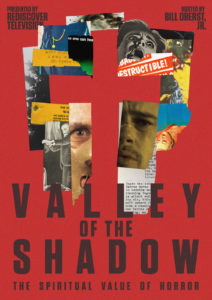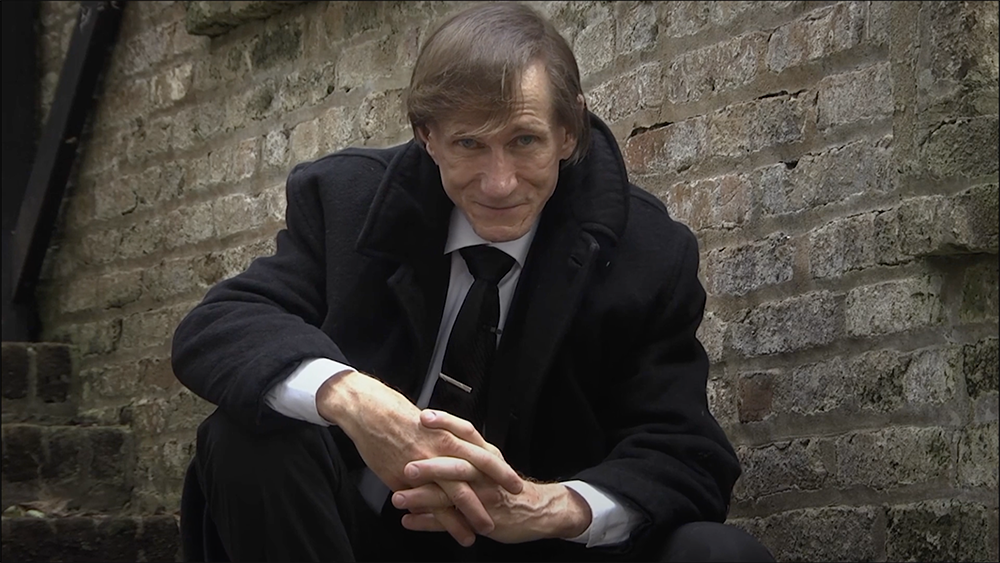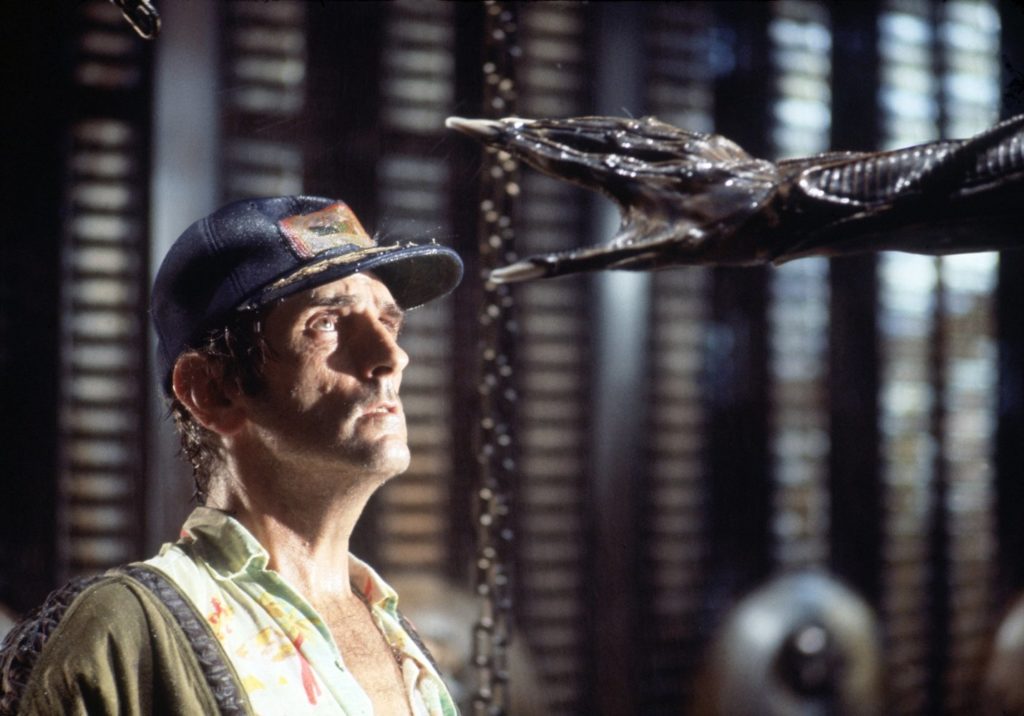Tyler Smith and Bill Oberst, Jr. Guide us Through the Profound Darkness of the Scariest Film Genre
DIRECTED BY TYLER SMITH/2021

Following the recent well-received video essay documentary Reel Redemption (an in-depth unpacking of the history and shape of Christian cinema), longtime movie critic and podcaster Tyler Smith (Battleship Pretension; More Than One Lesson) returns to filmmaking. Once again courting an audience of faith via a Christian-friendly steaming service, the wonderfully titled Valley of the Shadow makes good on its promise to illuminate the spiritual value of horror.
When it comes to horror as an overarching subject, there’s certainly plenty to talk about. Clocking in at a formidable two hours and twenty minutes, Valley of the Shadow: The Spiritual Value of Horror does it’s very best to leave no stone unturned. Segments such as “The Unknowable”, “The Inevitable” and “The Abominable” guide us through basic primers on the metaphorical inherency of vampires, werewolves, mad scientists, zombies, nature run amok, and several more. Like Reel Redemption, Valley of the Shadow is made up of carefully selected film clips that are accompanied by educational narration. Along this dark and stormy excursion, viewers will witness moments from everything to Alien to Halloween; Dawn of the Dead to The Sixth Sense; Candyman to The Seventh Seal. The assembly is very well done, reflecting a right confidence and expertise. The span of selected movie moments demonstrate that Smith’s grasp of his subject is vast, although it should be noted that foreign horror tends to be largely relegated to silent German classics of the 1920s and thereabouts. (Robert Wiene’s The Cabinet of Dr. Caligari; F.W. Murnau’s Nosferatu; Fritz Lang’s M and Metropolis)
Crucially, the whole thing, from start to finish, is hosted, and narrated by veteran actor Bill Oberst, Jr. Upfront, Oberst introduces himself as both a performer with no shortage of disturbing horror titles on his resume (Circus of the Dead; 3 From Hell; Death House), but also a “person of faith”. He makes mention of the tension he often experiences as he frequently finds himself “at odds with his fellow Christians”. The immediate conceit is that if Oberst, a man who’s been in Rob Zombie a movie among many other uneasy titles, can find reconciliation between these two extremely separated cultural poles in his life and his identity, surely those not neck-deep in it can, as well. What follows for the next two-plus hours, then, is ostensibly the actor’s intention to detail the ascribed “spiritual value” of his chosen niche. (In actuality, the film is scripted by Smith and co-writer Reed Lackey). Both historically and contemporarily, cinema history of the monstrous and phantasmagorical are quantified in terms of their allegorical aspects. Refreshingly if not always easy, the mirror of spiritual examination is continuously held up to the viewer, rooted in a theological understanding of inherent human brokenness that is ever in need of redemption.

Christians with such a profound devotion to horror are rare indeed, but for those who have been down these ominous paths before, Valley of the Shadow will likely play as a thoughtful and accomplished gathering of rather basic ideas. (Ideas that can be existentially key, and of which there are no shortage). The very apparent intention is to clarify these ideas to the traditionally horror-averse modern Christian church- an institution who’s blatant, surface-level condemnation of the form is not merely misguided, but ultimately antithetical. The thesis that horror, with its unique capacity for blunt directness, can be the most “Christian” of genres- that “the darker the shadow, the brighter the light”- while spot-on, is always a frustratingly hard sell. Even for believers who are open to the notion of redemptive horror (a concept that is, in fact, very Biblical), the prospect of navigating a 140-minute documentary, stitched together, no less, of the very movies they’re fearful of, may be a particularly challenging ask.
In this, be not afraid, people of faith! Smith has personally assured this writer that he “actively tried to avoid showing too much gore”, in the interest of maintaining a more approachable “PG-13” level. Considering that Smith and Lackey do not hold back from discussing violent and often controversial R-rated films, sometimes at length (The Exorcist; Silver Bullet), their commitment to crafting a palatable piece for a typically skittish audience is commendable. Not only commendable, but successful. While there is indeed plenty of images that are frightening in and of themselves (we see the ghoulish likeness of Freddy Krueger; the demented grins of Jack Nicholson, etc. This is, after all, a horror movie doc), curious Christians can rest assured that most if not all overt brutality is left to the source material. (My 13-year-old daughter watched Valley of the Shadow and found it very engaging).

By contrast, experienced horror fans curious about the spiritual connections that the film makes may well find Valley of the Shadow a toothless affair, dancing around the essential violence and, far more pointedly, around the overt and sometimes graphic sexual components inherent in the films in question. The lack of proper direct confrontation regarding horror’s deep sexual connections, both psychologically fundamental and for exploitation purposes, is a painfully glaring omission in this otherwise extensive cataloging. The legitimately problematic faces of horror films are left unexplored. (Perhaps Valley of the Shadow could go further as a series rather a single film?) The film’s ending is particularly “churchy”, as the preceding parade of horror clips gives way to a not-brief segment of Jesus movie highlights, accompanied with proclamations worthy of an Easter morning church service.
To reiterate, all of this is in service of Christians looking to engage with contemporary horror- not necessarily the other way around. In pursuing their goal with the film’s target audience, Smith and Lackey are considerate and patient though not coddling nor condescending. Those who choose to be offended by the existence of this film (or by any accompanying horror films that its host service opts to provide) need to clam up until they’ve watched this documentary in its entirety.
Valley of the Shadow is a tremendously extensive piece, even with its primarily American cinematic focus. It’s got a great momentum (thanks in part to the original music of composer Amsi Hernandez), making the runtime not a nonissue. In its proper context, Valley of the Shadow opens an important vein of cultural and yes, spiritual understanding- though it will likely need to be content doing so one searching soul at a time.
Valley of the Shadow: The Spiritual Value of Horror is currently available on the ReDiscover Television streaming platform and on demand via Vimeo.

